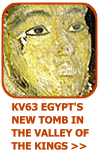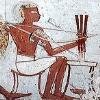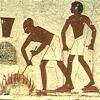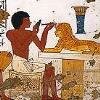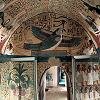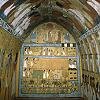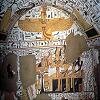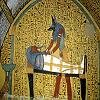|
|
|

[ Peasant Farmers ] [ Craftsmen ] [ Scribes ] [ Priests ] [ Back to Life in Ancient Egypt ]
The skills of the craftsmen ...
Craftsmen in Ancient Egypt were usually trained and skilled labourers. Well respected within the community, they led comfortable lifestyles, although their lifestyle and social standing would ultimately depend on their skills and experience.
Craftsmen involved with the decoration of a royal tomb and the production of funerary equipment and goods for the tomb would often live on site in purpose built villages for the workmen. Well known and excavated workmen's villages include:
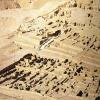 |
Deir el-Medina. This New Kingdom workman's village was located in Thebes and around one hundred or so people, including children, lived in the community, together with a significant number of "foreigners". In addition to the names of the viziers and other high officials who oversaw from Thebes, the names, families, and other details of the workmen’s lives are known. The tomb of Sennedjem and his wife and family is probably one of the best known.
Deir el-Medina has produced an incredible wealth of material providing invaluable information about the way these people lived: their marriages, inheritances, divorces, legal business and advice from the gods. Scribes would use papyri and pieces of limestone (ostraca) as notepads, and thousands of these were discovered inscribed with letters, notes, records, and many other kinds of evidence concerning the lives of the men and their families, most dating from the 19th and 20th dynasties.
|
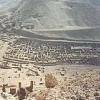 |
|
Kahun. This Middle Kingdom worker's village is located at Fayoum Oasis, at the site of the Pyramid of el-Lahun (Hawara) built by Senosret II. Originally excavated by Flinders Petrie in 1889 and 1890, the site revealed many treasures of daily life in the Middle Kingdom. Although principally a workman's town, the town housed several different social classes. Kahun would have been a complete functioning unit, accommodating doctors, lawyers, scribes and priests as well as those trained for manual labour. There were workers' houses, houses for the “middle classes” and larger mansion style houses.
After a century of occupation the town was deserted. Whatever the reason, the inhabitants of the town left suddenly, practically overnight, leaving behind many of everyday belongings, including high-quality tools, papyri, serving-dishes, 'magical' wands and masks.
|
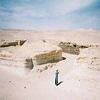 |
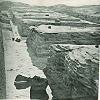 |
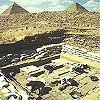 |
Giza. The Old Kingdom worker's villages of the Giza plateau are currently being excavated. Since the reign of Snefru, an entire town was associated with each pyramid, full of people employed to maintain the king’s afterlife. New villages and agricultural estates were founded, specifically to supply the pyramid cult and those who worked for it.
To build and maintain the pyramids an enormous support system must have existed. Production, facilities for food, pottery, building materials, and supplies, storage depots, and housing for the workmen and those responsible for servicing the pyramid temples were necessary. Evidence of a sewage system was uncovered. The oldest known paved street, with drainage facilities, and the oldest known hypostyle hall have been found here.
|
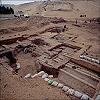 |
Buried in style - the worker's tombs ...
| Sennedjem's tomb was directly facing the house in which he had lived, in the new quarter of the village of the tomb workmen, at Deir el-Medina. Deir el-Medina was known as the "Place of Truth", and the workers and craftmen who lived in the village held the title "Servant in the Place of Truth". |
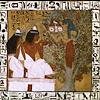 |
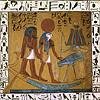 |
Discover life as a scribe in Ancient Egypt >>
|
|
|






